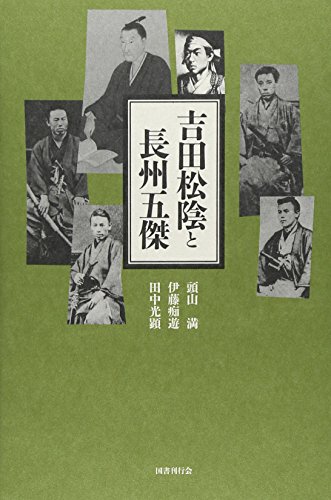2 0 0 0 OA 三年生の幾何・三角法 : 教科書本位・問題精解
1 0 0 0 維新風雲回顧録 : 最後の志士が語る
1 0 0 0 吉田松陰と長州五傑
- 著者
- 頭山満 伊藤痴遊 田中光顕著
- 出版者
- 国書刊行会
- 巻号頁・発行日
- 2015
- 著者
- 木村 拓也 荒井 克弘 大塚 雄作 林 洋一郎 西郡 大 立脇 洋介 中世古 貴彦 竹熊 尚夫 花井 渉 田中 光晴 渡辺 雅幸 牧 貴愛 関口 洋平
- 出版者
- 九州大学
- 雑誌
- 基盤研究(B)
- 巻号頁・発行日
- 2022-04-01
本研究は,大学入学者選抜統一試験が、高等教育の大衆化・国際化・情報化という大きな変化の中で、如何に制度としての公平性・公正性を担保しているのかについて学際共同研究を行うものである。資格試験制度と選抜試験制度とがモザイク状に混在するアジア各国の大学入試制度に着目し、時代の変化と共に制度設計が益々困難となりつつある、大学入学者選抜統一試験に焦点を当てる。本研究では、教育計画論の立場から大衆化に代表される変化の中での大学入学者選抜統一試験の課題を理論的に精査し、比較教育学の立場からその制度変容(改革経緯)と制度設計の具体を精査し、社会心理学の立場から受験生の納得感を公正知覚の観点で計量分析を行う。
1 0 0 0 OA 20世紀初頭における郵便貯金と大衆貯蓄行動 : 静岡県三島町の事例を中心に
- 著者
- 田中 光
- 出版者
- 政治経済学・経済史学会
- 雑誌
- 歴史と経済 (ISSN:13479660)
- 巻号頁・発行日
- vol.54, no.2, pp.16-31, 2012-01-30 (Released:2017-08-30)
- 参考文献数
- 108
The Japanese savings rate rose to around 10 percent in the early 20th century. The growth of individual savings supported and stabilized this high savings rate. This paper examines how and why the individual savings grew in modern Japan. The Japanese Postal Savings Bank was the first nation-wide saving bank for ordinary people's small savings, and became generally popular at the beginning of 20th century as the savings rate rose. This paper therefore focuses on the spread of the Postal Saving Bank's individual deposit accounts. Previous studies have revealed that central government policy promoting individual savings affected deposits in the Postal Savings Bank. But government policy was not the only factor which induced people to save. Various local organizations and their actions also widely affected ordinary people's saving behaviors. The experience of Mishima City in Shizuoka Prefecture provides a good example of how saving behavior spread in local society. In Mishima, new modern organizations such as the local post office, elementary schools and local government, were well aware of the central government policy promoting savings, and additionally they had influence in the local community. To give one example, Mishima elementary school cooperated with Mishima post office to promote making small savings to parents through school children. As the government implemented systems to promote postal savings, local community leaders tried to utilize those systems. Additionally, these local leaders did not just accept this policy; to a certain extent they could also give advice to government about it. It was not only the modern but also the older parts of society that joined in the promotion of savings. In Mishima, local small savings organizations such as mujin (pre-modern mutual financing communities) and local residents' unions were promoted by local government and local post offices. Although there were a variety of purposes for savings, these savings movements lead the growth of small deposits in local modern banks, similar to postal savings. As the postal savings system developed in local communities, pre-modern collective savings were integrated to the modern system and the new generation was trained in the concept of saving. This happened all over Japan, not only in Mishima. In the early 20th century, Japanese local society was in many respects being reconstructed. Savings behavior and the promotion of individual saving was one typical trend in this process. This movement affected the Japanese national savings rate, and to a certain extent supported capital accumulation for Japanese modernization.
1 0 0 0 興奮性神経伝達物質としてのGABAの機能的役割
成人の脳では、γ-アミノ酪酸(GABA)はGABA_A受容体に結合し、神経細胞を過分極する抑制性神経伝達物質として知られている。しかし、幼弱な脳、あるいは成人の脳でも視交叉上核、外傷後の神経細胞に対しては、脱分極作用を示し、興奮性神経伝達物質として働くことが知られている。このGABAの持つ脱分極作用は、神経系の発達、概日リズムの形成、外傷後の脳損傷および回復過程になんらかの役割を果たしていると考えられているが、その機能的役割は不明である。最近、GABAにより脱分極する神経細胞には、Cl^-を細胞外へ汲み出すK^+-Cl^-共輸送体(KCC2)が発現していないため、細胞内Cl^-濃度が高く保たれ、Cl^-の平衡電位が静止膜電位より脱分極側にシフトしていることが示された。本研究では、K^+-Cl^-共輸送体を過剰発現させることにより、細胞内Cl^-濃度を制御し、GABAの脱分極作用のみを抑制するマウスを作成し、いままで全く実験的証拠のなかったGABAの神経興奮性作用の機能的役割を個体レベルで解明する。本年度は、平成13年度に作成した生後直後からK^+-Cl^-共輸送体(KCC2)を過剰発現しているマウスの表現型を解析した。KCC2過剰発現マウスは,野生型に比べ、自発運動量の低下が観察された。また、概日リズムの光による同調能にも異常が観察された。現在これらの表現型が、KCC2を過剰発現させたことによる抑制性ニューロンの抑制能の増強によるものかどうか、形態学的、電気生理学的により詳細な解析を進めているところである。
1 0 0 0 胃切除後患者の食事摂取量と栄養状態の関連について
1 0 0 0 OA 大学生におけるノートテイキングの方略使用の規定因
- 著者
- 田中 光 山根 嵩史 魚崎 祐子 中條 和光
- 出版者
- 日本教育工学会
- 雑誌
- 日本教育工学会論文誌 (ISSN:13498290)
- 巻号頁・発行日
- vol.44, no.Suppl., pp.89-92, 2021-02-20 (Released:2021-03-08)
- 参考文献数
- 12
本研究では,ノートテイキングの方略とその使用の規定因を調べた.大学生を対象に授業中のノートとり行動に関する質問紙調査を行い,因子分析によって,見やすさ,視覚的標識化,思考の外化,情報の精選,授業の記録というノートテイキングの5つの方略を見出した.また方略使用の規定因を調べるために,学習に対する自己効力感の高低2群を設けて,有効性認知やコスト感と方略使用との関係を調べた.その結果,自己効力感高群はコスト感に関わらず有効性の高い方略を使用するが,低群は有効性を考慮するもののコスト感の高い方略を使用しないことが見いだされ,自己効力感の低い学習者にはコスト感を低減させる必要があることが示唆された.
1 0 0 0 OA 本学小児歯科における全身麻酔下での歯科治療の実態
- 著者
- 齊藤 桂子 氏家 隼人 蒔苗 剛 櫻井 真梨子 松本 弘紀 青木 健史 宮田 泰子 三笠 祐介 藤井 雅 丸谷 由里子 田中 光郎
- 出版者
- 一般財団法人 日本小児歯科学会
- 雑誌
- 小児歯科学雑誌 (ISSN:05831199)
- 巻号頁・発行日
- vol.54, no.4, pp.482-487, 2016-11-25 (Released:2017-11-25)
- 参考文献数
- 11
- 被引用文献数
- 4
本学歯科医療センター小児歯科外来では,歯科治療の際に特別な対応が必要な心身障害児や不協力児に対して,その患者の治療に対する協力状態により全身麻酔下での歯科治療を選択している。平成21 年1 月から平成27 年12 月までの7 年間に当科を受診し,全身麻酔下での歯科治療を行った症例を対象として実態調査を行い,平成元年の当科の調査結果と比較検討した。1 .症例数と年齢分布:82 名(男性53 名,女性29 名)の患者を対象に,のべ87 回行われた。処置平均年齢は12 歳5 か月であり,過去の報告と同程度であった。2 .患者の内訳:対象患者の51%が障害児・障害者であり,その多くは精神遅滞であり,過去の報告と同様であった。3 .処置内容と処置歯数:1 症例当たりの平均処置歯数は乳歯10.5 歯,永久歯7.6 歯であり,コンポジットレジン充填が乳歯6.8 歯,永久歯5.6 歯で最も多く,過去の報告と同様の傾向を認めた。4 .処置時間:平均処置時間は2 時間13 分であり,過去の報告より処置時間は短縮していた。5 .本県のような面積の広い地域においては,とくに地域の開業医と大学の連携が重要であると考えられた。
1 0 0 0 OA 長期不況に対抗する協同組合の経営戦略 ―戦間期日本長野県和村の産業組合の事例から―
- 著者
- 田中 光
- 出版者
- 経営史学会
- 雑誌
- 経営史学 (ISSN:03869113)
- 巻号頁・発行日
- vol.52, no.2, pp.3-28, 2017 (Released:2019-09-30)
- 被引用文献数
- 1
In the Interwar period, especially the 1920s-30s, the Japanese economy faced a long recession. As heavy industry began to develop again in the late 1930s, urban areas headed to recovery. On the other hand, rural society was strongly tied with light industry (especially silk spinning), and faced continued recession.Worsening the situation, many natural disaster occurred in this period (Great Kanto Earthquake, huge frost damage in Central Japan area, Showa Sanriku Tsunami and so on). The Japanese economy and society were severely challenged. The Japanese central government even planned for emigration to Manchuria to reduce these domestic problems, a policy that would have disastrous consequences after the war.However, not all villages relied on the Manchuria emigration policy for their community's survival. Many rural villages maintained social order without a decrease in population. A major factor in the survival of these communities appears to have been the existence of a local cooperative. This paper shows how local cooperatives mitigated the economic crisis using a case study: Kano Credit Union, in Nagano prefecture.The economy of Kano village was severely damaged by declining silk prices, as well as natural disasters. Despite this, the cooperative maintained profitability. The Kano cooperative had been honored by the National cooperatives' central association in 1910 for its good management practices, so this cooperative provides an ideal model. I analyze the Kano cooperative's business during the interwar period, and show how local community cooperatives provide a source of stability during periods of economic crisis.
1 0 0 0 OA 近代日本の地域経済発展と産業組合
- 著者
- 田中 光
- 出版者
- Business History Society of Japan
- 雑誌
- 経営史学 (ISSN:03869113)
- 巻号頁・発行日
- vol.46, no.4, pp.4_3-4_22, 2012 (Released:2014-09-10)
One aspect of Japanese modernization in the early 20th century was rural economic development. Farmers played a large role in the development process because of the importance of agriculture, especially sericulture, to Japanese exports.Micro-finance was one of the factors in the rural development process (as we have seen with Grameen Bank in the present day). This paper analyzes the birth and growth in modern Japan of a local micro-finance system. It does so through a case study of Kano village, which is in the Chiisagata area of Nagano Prefecture. This was the center of Japanese sericulture production.In 1900, the Japanese government adopted the Industrial Cooperatives Act. It was a mixture of ideas taken from overseas. The intent was to provide credit for cooperative members. This kind of cooperative credit union spread throughout Japan over the next two decades or so.Earlier, the construction of a national railway network had not only integrated the Japanese internal market but also connected it with markets outside Japan. By the 1880s, over 50% of American raw silk was produced in Japan. As the industry expanded, it needed capital for seasonal purchases of fertilizer. However, because the scale of production was small, Japanese farmers had difficulty in obtaining credit. The credit unions created in the wake of the Industrial Cooperative Act helped to satisfy the demand for capital and allow the industry to grow.Silk was the main cash crop in Kano village. The Kano Credit Union was organized in 1903 by a young graduate of one of Japanese new universities. Other executives of the cooperative included wealthy farmers and the village's former officials. The cooperative itself was a modern institution but it drew on pre-existing traditions of local credit networks.This paper focuses on the Kano Credit Union through the end of World War I. Its growth supported, and was supported by, a boom in the local sericulture industry. Hence micro-finance provided crucial support for the development of the local economy.
1 0 0 0 IR 退官者の挨拶・退官者を送る
- 著者
- 志田 嘉次郎 浜垣 秀樹 小澤 徹 田賀井 篤平 藤田 宗孝 片山 武司 鈴木 美和子 東江 昭夫 森 君江 黒岩 常祥 田中 光明 植木 昭勝 田中 亘 中田 好
- 出版者
- 東京大学大学院理学系研究科・理学部
- 雑誌
- 東京大学大学院理学系研究科・理学部廣報
- 巻号頁・発行日
- vol.31, no.4, pp.22-34, 2000-03
停年を迎えるにあたって/志田嘉次郎先生を送る/退職にあたって思い出と感謝/小澤先生を送る/退官にあたって/藤田さんを送る/理学部での40年間を振り返って/鈴木美和子さんを送る/二つの幸せ/森さんを送る/数々の思い出から/田中さんを送る/退官にあたって/田中さんを送る
1 0 0 0 OA 波動現象の基礎知識 3.弱い分散性の効果-K-dV方程式とその周辺-
- 著者
- 田中 光宏
- 出版者
- 社団法人 日本流体力学会
- 雑誌
- 日本流体力学会誌「ながれ」 (ISSN:02863154)
- 巻号頁・発行日
- vol.13, no.3, pp.244-250, 1994-06-28 (Released:2011-03-07)
- 参考文献数
- 8



